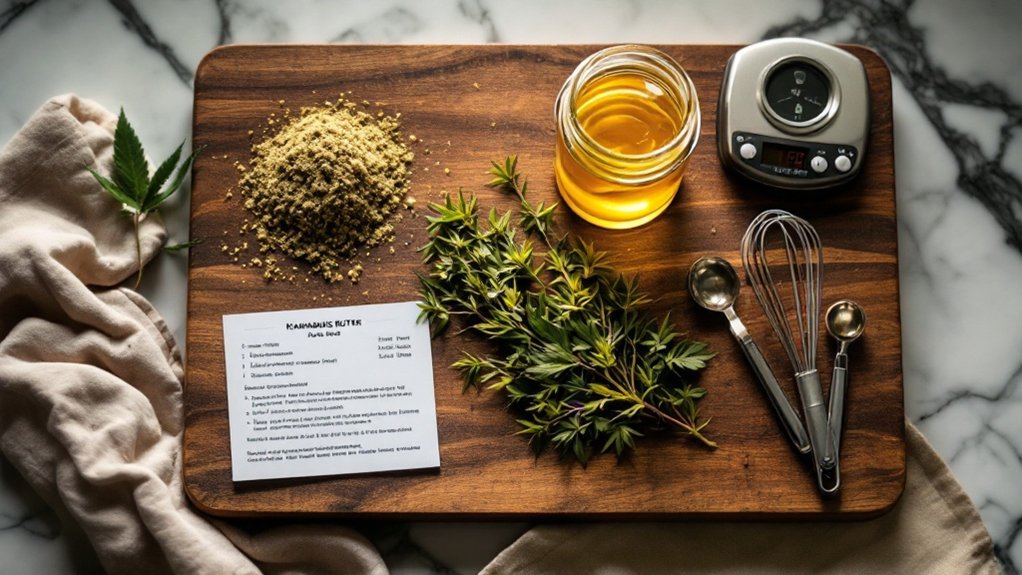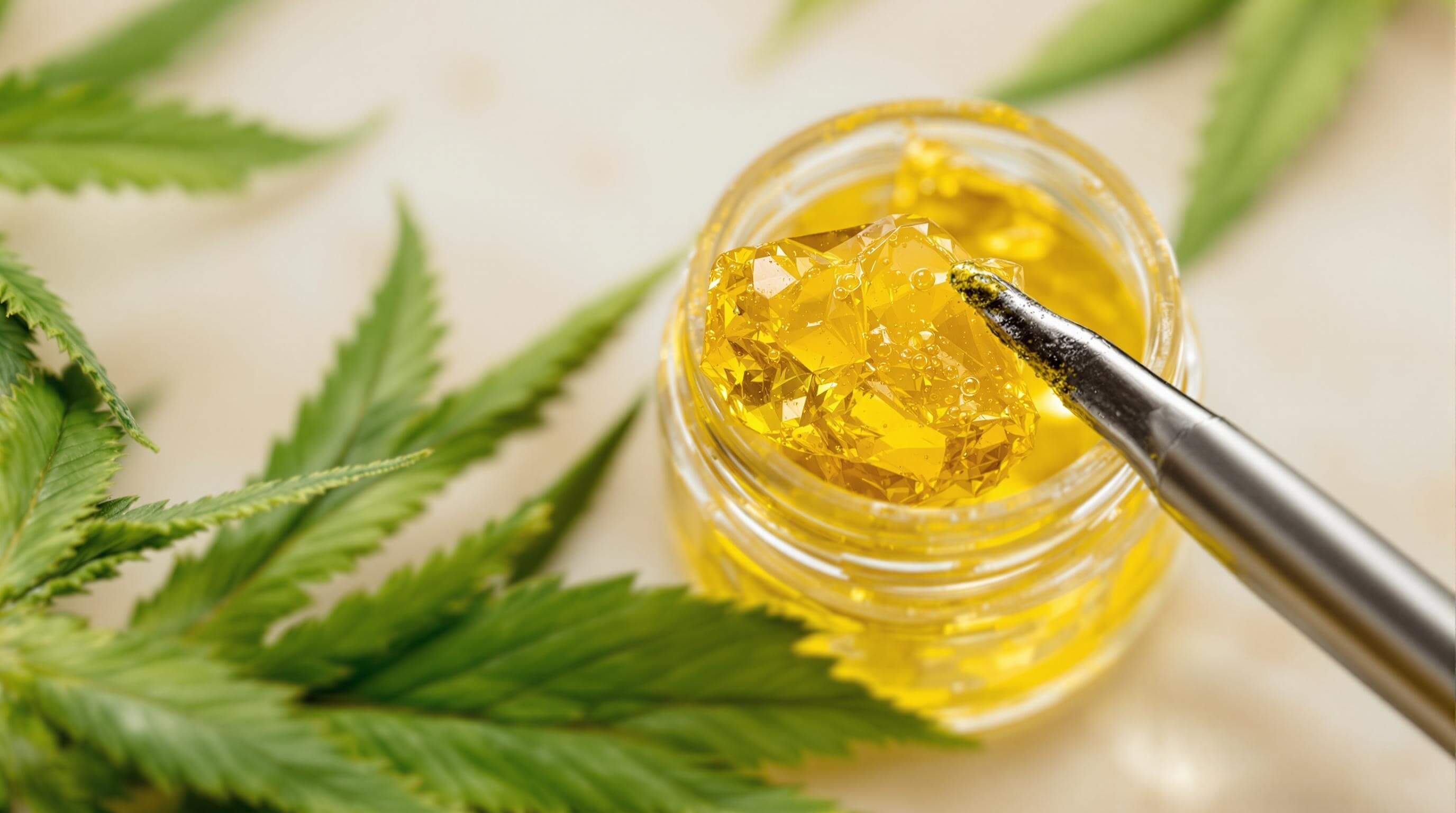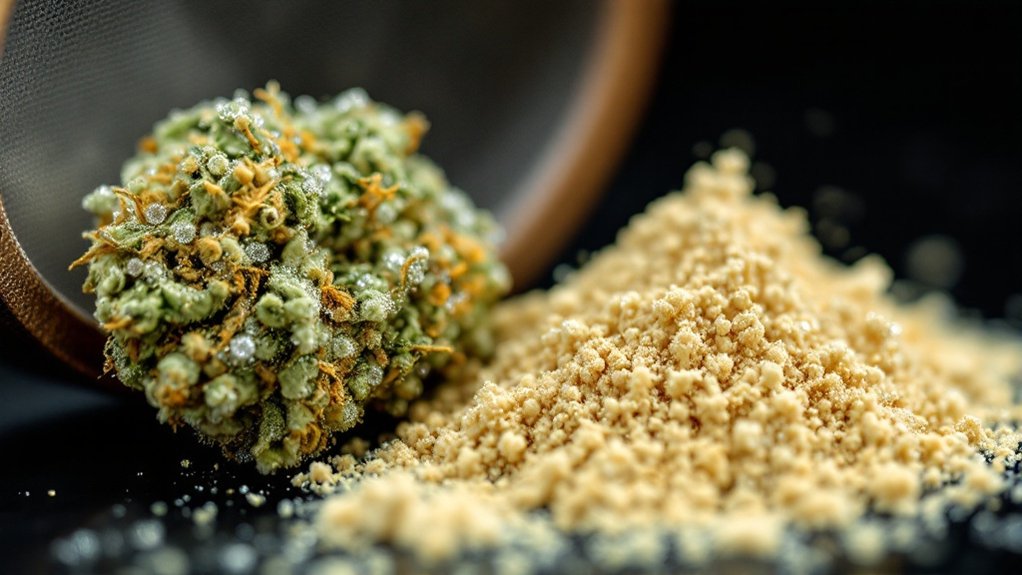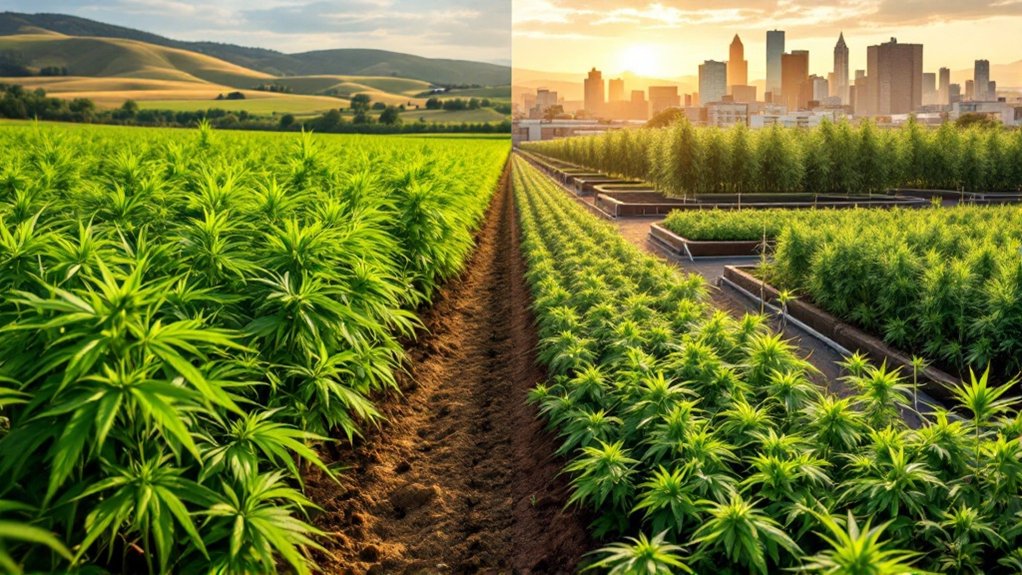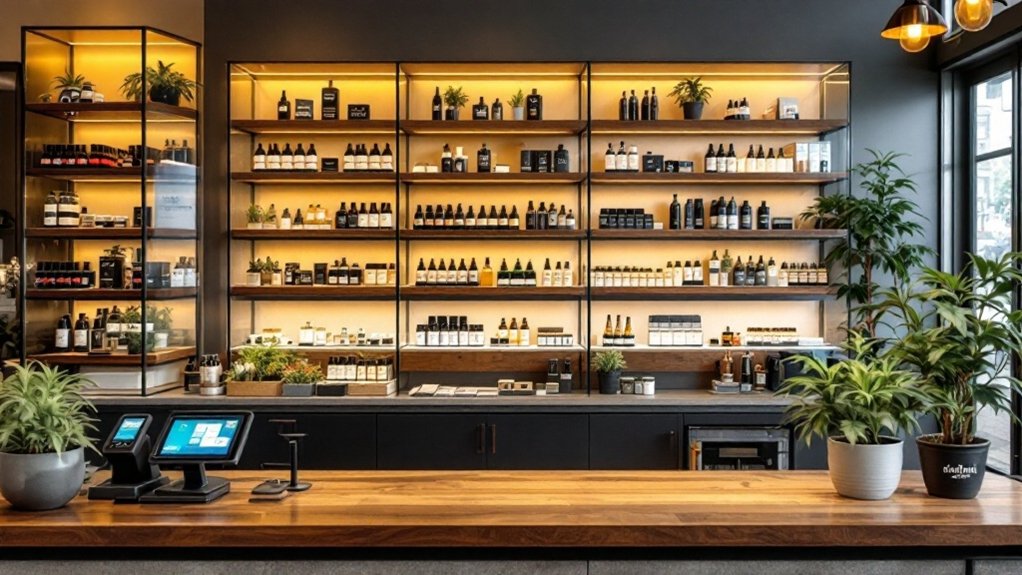Cooking with cannabis requires understanding key principles for successful results. First, decarboxylate cannabis by baking at 245°F for 35 minutes to activate THC compounds. Next, infuse the activated cannabis into a high-fat carrier like butter or oil, simmering between 160-190°F for 2-3 hours. Beginners should start with minimal doses of 2.5-5mg THC per serving, gradually increasing as desired. Proper storage in cool, dark places with clear labeling guarantees safety and potency. These foundational techniques open doors to creating both sweet and savory cannabis-infused culinary creations.
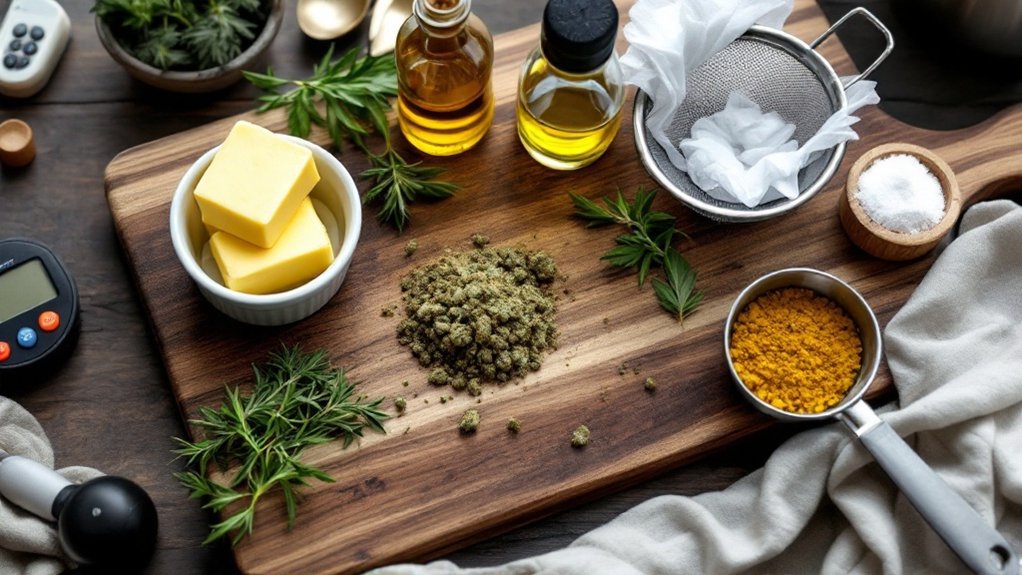
Starting on the journey of cooking with cannabis requires understanding both culinary arts and the science behind cannabis preparation. Newcomers need to grasp the fundamental difference between THC (tetrahydrocannabinol), the psychoactive compound that creates the “high,” and CBD (cannabidiol), which does not produce psychoactive effects. This knowledge forms the foundation for creating properly dosed and effective cannabis-infused foods that deliver the desired experience. CBD may actually offset the intoxication from THC when these compounds are consumed together in edibles.
The process begins with decarboxylation, an essential step that activates the cannabis compounds. This chemical process converts the non-psychoactive THC-A into THC by applying controlled heat. To decarboxylate cannabis properly, one must preheat an oven to 245°F, spread ground cannabis evenly on a baking sheet, and bake for approximately 35 minutes while flipping every 10 minutes. Without this step, the cannabis will not produce its full effects when consumed.
After decarboxylation comes infusion, typically using high-fat substances like butter or oil which effectively bind to cannabinoids. The decarboxylated cannabis should be combined with butter or oil and simmered on low heat for 2-3 hours, ensuring the temperature remains low enough to prevent scorching. Adding a small amount of water to butter can help prevent scorching while maintaining an ideal infusion temperature between 160°F and 190°F. The mixture must then be strained through cheesecloth to remove plant material, resulting in a potent cooking ingredient that can be incorporated into various recipes.
Dosage represents one of the most vital aspects of cannabis cooking. Beginners should start with minimal amounts, typically 2.5-5mg of THC per serving, and increase gradually as tolerance develops. Using a cannabis calculator helps achieve consistent potency across batches. Individual sensitivity to THC varies greatly, making conservative dosing especially important for first-time users.
Cannabis can be infused into countless recipes beyond the stereotypical brownies and cookies. To maximize potency and flavor distribution, always use a grinder when preparing cannabis for cooking to ensure even extraction of cannabinoids. Both sweet and savory dishes work well with cannabis-infused ingredients, allowing for creative exploration across different cuisines and flavor profiles. Various cannabis strains contribute their own unique flavors to dishes, opening possibilities for culinary experimentation.
Proper storage of cannabis edibles requires cool, dark conditions and clear labeling with potency information and production dates. Safety measures include keeping edibles securely stored away from children and pets. Users must also consider legal compliance, as cannabis regulations vary widely across regions.
Frequently Asked Questions
How Do Dosages Differ in Edibles Versus Smoking?
Edible cannabis produces stronger effects than smoking due to liver metabolism converting THC to 11-hydroxy-THC, a more potent compound.
While smoking delivers immediate effects within minutes that last 1-3 hours, edibles take 30 minutes to 2 hours to activate but can last 6+ hours.
New users should begin with 2.5mg THC for edibles versus 10% THC content for smoking, following the principle “start low and go slow” to prevent adverse reactions.
Will Cooking Cannabis Destroy Its Medical Benefits?
Properly cooking cannabis does not destroy its medical benefits if appropriate techniques are used.
Decarboxylation, the process of heating cannabis to activate THC, actually enhances its therapeutic properties when temperatures remain below 315°F. Excessive heat above this threshold can degrade cannabinoids, reducing efficacy.
Using low, controlled temperatures and proper extraction methods preserves beneficial compounds like terpenes and cannabinoids. Certain cooking approaches may even improve bioavailability, allowing for more effective delivery of medicinal components.
How Long Do Cannabis-Infused Oils and Butters Stay Fresh?
Cannabis-infused oils and butters have varying shelf lives depending on storage methods.
When kept at room temperature, these products typically last only a few days. Refrigeration extends freshness to several weeks, while freezing preserves them for six months or longer.
The longevity is further affected by ingredients, container type, and exposure to light, heat, and air. Airtight, opaque containers stored in cool environments maximize preservation of both culinary quality and cannabinoid potency.
Can I Use Any Strain for Cooking?
While any strain can technically be used for cooking, not all strains yield ideal culinary results. The choice depends on desired effects and flavor profiles.
Aromatic varieties like Durban Poison enhance dishes with sweet, spicy notes, while high-CBD strains such as Charlotte’s Web offer therapeutic benefits without intense psychoactive effects.
Strain selection should consider the recipe’s flavor compatibility, potency requirements, and the balance between THC and CBD for the intended experience.
How Do I Avoid My Kitchen Smelling When Infusing Cannabis?
To minimize kitchen odors when infusing cannabis, proper ventilation is essential.
Opening windows while using fans for cross ventilation directs odors outside, while air purifiers with HEPA and carbon filters capture smoke particles effectively.
Using vapor-based methods and lower heat during infusion markedly reduces odor production.
Natural neutralizers like citrus or pine essential oils counter cannabis scents, and products such as Ecosorb specifically target these odors.
Regular cleaning of surfaces and maintaining range hood filters prevents residue accumulation.
